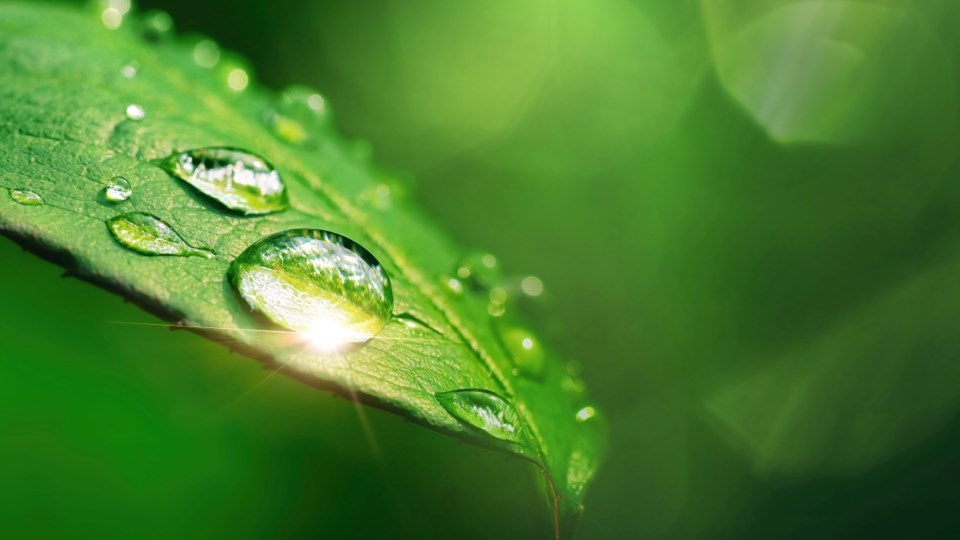Texas summers are hard on plants of all kinds. Most plants grow best between 59-86 degrees Fahrenheit. When it gets hotter, especially with no relief at night, plants get stressed. You can do things to protect your plants, however.
Signs of Heat Stress In Plants
The first sign of heat stress is generally wilting. If the plant gets adequate water, the wilting can be reversed most of the time. Permanent damage can occur if the plant is not watered promptly.
Tomatoes and some other plants roll or cup their leaves to minimize the surface of the leave that is exposed. If the heat continues, many plants will develop dry leaf edges. On bad ozone days, plants can get ozone scald. This can look like a disease.
Many plants will drop their blossoms or fruit in extreme heat. Cool-season crops such as lettuce will bolt, or flower, in the heat. Finally, fruits and vegetables such as tomatoes can get sun scald.
Watering
Watering is the key to plant survival. Wet soil helps plants regulate their temperature and withstand higher temperatures. Dry soil wicks moisture from the plant and it dehydrates and dies. Here are some general watering guidelines.
- Water early in the morning.
- Use drip irrigation or water by hand by holding the water hose close to the ground. This minimizes evaporation, which can reach forty percent when using a sprinkler on a hot day.
- Water deeply. Two to three waterings a week that leave the soil moist along the entire root system of the plant are better than more frequent shallow watering.
- Use a soil rod or probe to measure the depth the soil is wet. A rod will insert smoothly into moist soil but will stop when it hits dry soil.
People often ask how much water a plant needs. That depends on the plant and the weather. As a general guide, all plants need at least an inch of water a week. Some plants, such as vegetables, need more. Here are the general guidelines.
Trees need to be watered until the soil is wet three feet down. Water until the soil under the entire canopy of the tree is wet. Water once a week if there has been less than one inch of water from rain that week. Fruit trees that are bearing fruit need to be watered twice a week as the fruit uses a lot of water.
Shrubs need to be watered until the soil is wet two feet down. As with trees, they need to be watered once a week if there has been less than one inch of rain that week.
Perennials, annuals, herbs and lawns need an inch of water a week. Water until the soil is moist one foot down.
Vegetables need more water than they can get with a single watering a week. They need to be watered two or three times a week. It takes a lot of water to produce the vegetables we enjoy.
Containers, such as hanging baskets, need to be watered every day. The small volume of soil in a container dries out rapidly in the heat.
Fertilizing
It is best not to fertilize in the heat. The fertilizer can burn plants. It also can cause a surge of new growth, which the plant cannot support in the heat. This can cause the new growth, and sometimes the entire plant, to die.
Pruning
Do not prune during the heat. If you must deadhead, do it early in the morning so the cut is scabbed over before the heat builds. Fresh cuts can send a lot of water out of the plant in the heat.
Weed Control
Weed control is vital. Stressed plants do not need to be competing for scarce resources with weeds at any time of the year. In the heat, they can lose enough water to the weeds to be crowded out.
No Chemicals In The Heat
Do not spray any chemicals in the heat. Many pesticides will burn plants if they are applied when it is over 90 degrees. Horticultural oil is an example of a chemical that burns when it is hot.
Shade
You can use shade cloth to provide afternoon shade in the garden. This will help plants that are marginally adapted to full sun stay alive. Containers should be placed where they get afternoon shade as well. They will not dry out as fast as they do in the sun.
Gardener Safety
Heat doesn’t just stress plants. It stresses humans as well. Try to do your outdoor chores early in the morning or late in the evening. Always wear a hat and sunscreen. Light, long sleeve shirts, long pants and close-toed shoes will help you stay cooler in the sun. Make sure you remain hydrated. If you start to feel too hot, rest in the shade or indoors and drink lots of water. Finally, know the stages of heat illness and stay alert to any symptoms you begin to have.
Gardening in the heat can be challenging. The key to plant survival is regular, deep watering. The other key is to refrain from doing anything that might stress the plant. Stay alert for heat-related problems for the gardener, too.




